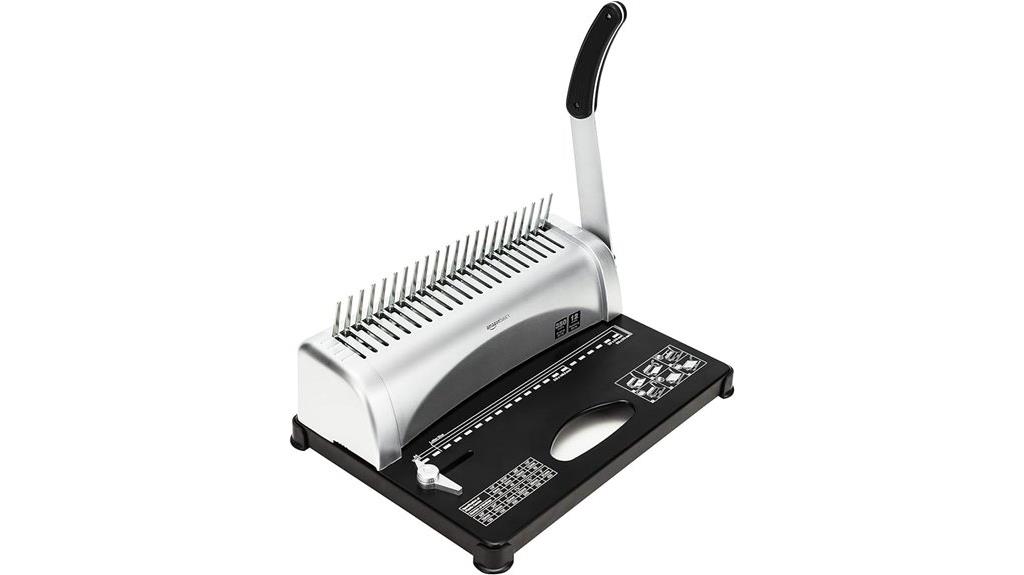I’ve been evaluating the Amazon Basics Comb Binding Machine for a while now, and I must say, it offers a solid solution for light binding needs. Its ability to handle both personal projects and educational materials is impressive, but there are some nuances to weigh. If you’re curious about how it performs in real-world scenarios and whether it’s the right fit for your binding tasks, keep on exploring.
Product Features and Specifications
The Amazon Basics Comb Binding Machine offers an impressive blend of functionality and design for anyone looking to tackle binding projects.
With a capacity to bind up to 350 pages and punch up to 12 sheets at a time, it’s perfect for various tasks. This machine accommodates A5, Letter, and A4 sizes, featuring a durable carbon steel hole punch blade.
Its all-in-one design simplifies the process, and the fixed paper slider mechanism guarantees precise hole alignment. Made from 90% steel and 10% plastic, it’s built to last.
Just remember, you’ll need to purchase plastic comb-style binder spines separately.
User Experience and Performance Insights
Many users find the Amazon Basics Comb Binding Machine easy to operate, making it a solid choice for their binding needs.
I’ve experienced similar satisfaction, especially when binding various projects like books and educational materials. Initially, I struggled a bit, but practice helped me get the hang of it.
I also noticed that punching 4-8 sheets at a time yields the best results, as the 12-sheet claim feels a bit optimistic.
I appreciate the ability to reopen combs for corrections, which adds to the machine’s versatility.
Setup Instructions and User Tips
When setting up the Amazon Basics Comb Binding Machine, I found that attaching the handle is a simple step that makes a big difference in usability.
After that, I recommend familiarizing myself with the fixed paper slider, which helps prevent misalignment during binding.
I noticed that watching tutorials online can really clarify the process, as the provided instructions aren’t very detailed.
When I started binding, I experienced some trial and error, but I quickly developed a rhythm.
If I struggled with page alignment, I adjusted my technique until it felt comfortable.
Practice definitely makes a difference in achieving perfect results!
Materials Compatibility and Limitations
After getting the hang of the binding process, I found it important to contemplate the materials I was working with.
Here’s what I discovered about compatibility and limitations:
- It binds cardstock covers easily but be cautious with plastic covers.
- The machine is lightweight, yet stable on various surfaces.
- It’s not ideal for high-volume jobs; think of it for occasional use.
- Users should expect some limitations in punching capacity, especially beyond 8 sheets.
In short, understanding these factors can really enhance your binding experience and help avoid frustration.
Overall Value and User Satisfaction
Evaluating the overall value and user satisfaction of the Amazon Basics Comb Binding Machine reveals a positive trend among casual users.
I’ve found it to be a cost-effective solution for personal projects. Many users appreciate the machine’s ease of use, especially after a bit of practice.
While the initial instructions could be clearer, I discovered that watching tutorials really helps. The binding quality is solid for light to moderate use, although it’s not meant for high-volume tasks.

